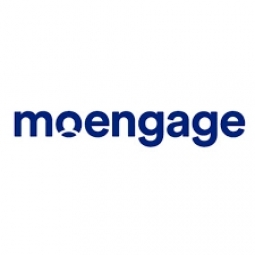Technology Category
- Platform as a Service (PaaS) - Application Development Platforms
- Robots - Wheeled Robots
Applicable Industries
- Cities & Municipalities
- Telecommunications
Applicable Functions
- Logistics & Transportation
- Sales & Marketing
Use Cases
- Leasing Finance Automation
- Material Handling Automation
About The Customer
Treebo is one of India’s leading tech-enabled budget hotel chains, offering quality accommodation at affordable prices. The company, which gets its name from the vast reach of the banyan tree, is currently active across 430 hotels in 83 cities. Treebo was striving to establish their brand and recall in the crowded budget hotel industry in India, differentiating themselves based on a superior customer experience across various touch points. Their primary goal was to convert new users by personalizing their onboarding journey, position the Treebo brand using personalized messaging platforms, and improve conversions by optimizing mobile and web experiences.
The Challenge
Treebo, one of India’s top-rated tech-enabled hotel chains, was facing a significant challenge in the crowded budget hotel industry in India. The company was striving to establish their brand and recall while differentiating themselves based on a superior customer experience across various touch points. The primary goal was to convert new users by personalizing their onboarding journey, position the Treebo brand using personalized messaging platforms, and improve conversions by optimizing mobile and web experiences. However, despite having the marketing messages that drove conversions, they lacked a tech stack that would help them execute at-scale and improve the customer’s web and app experience.
The Solution
Treebo turned to MoEngage, implementing their marketing automation practices to drive conversion rates and a tech-stack to optimize the mobile and web experience. MoEngage’s on-site messaging gave Treebo the freedom to use a series of messages that provided the user with ample information about the Treebo brand and its offerings. MoEngage’s marketing automation helped personify the marketing messages created by Treebo, enabling Treebo to use its personalized messages at every stage of onboarding, from app installation to acquisition. This level of personalization helped Treebo reach out to its app and web users. Additionally, Treebo used MoEngage’s platform to trigger real-time messages that reached users even after they left the website, increasing their conversion rates and improving the overall website engagement.
Operational Impact
Quantitative Benefit

Case Study missing?
Start adding your own!
Register with your work email and create a new case study profile for your business.
Related Case Studies.

Case Study
Turning A Stadium Into A Smart Building
Honeywell created what it called the “intelligent system” for the National Stadium in Beijing, China, turning the venue for the opening and closing events at the 2008 Summer Olympics into a “smart building.” Designed by highly controversial artist Ai Weiwei, the “Bird’s Nest” remains one of the most impressive feats of stadium architecture in the world. The 250,000 square meter structure housed more than 100,000 athletes and spectators at a time. To accommodate such capacity, China turned to Honeywell’s EBI Integrated Building Management System to create an integrated “intelligent system” for improved building security, safety and energy efficiency.
.png)
Case Study
Smart Street Light Network (Copenhagen)
Key stakeholders are taking a comprehensive approach to rethinking smart city innovation. City leaders have collaborated through partnerships involving government, research institutions and solution providers. The Copenhagen Solutions Lab is one of the leading organizations at the forefront of this movement. By bringing together manufacturers with municipal buyers, the Copenhagen Solutions Lab has catalyzed the development and deployment of next-generation smart city innovations. Copenhagen is leveraging this unique approach to accelerate the implementation of smart city solutions. One of the primary focus areas is LED street lighting.

Case Study
Buoy Status Monitoring with LoRa
The Netherlands are well-known for their inland waterways, canals, sluices and of course port activities. The Dutch Ministry of Infrastructure indicates that there are thousands of buoys and fixed items in and near water environments that would profit from IoT monitoring. One of the problems with buoys for example, is that they get hit by ships and the anchor cable breaks. Without connectivity, it takes quite some time to find out that something has happened with that buoy. Not to mention the costs of renting a boat to go to the buoy to fix it. Another important issue, is that there is no real-time monitoring of the buoys at this moment. Only by physically visiting the object on the water, one gains insight in its status.

Case Study
Barcelona Case Study
Barcelona’s heavy traffic and its associated high levels of pollution were the primary factors that motivated some companies and universities to work on strategies for improving traffic in the city centre. Bitcarrier is one of the technologies involved in the In4Mo Project, whose main objective is to develop the applications that form the core of smart mobility, one of the fundamental pillars of the smart city concept.

Case Study
China Mobile Smart Parking
Smart Parking, powered by NB-IoT technology, is making it easier for drivers to find free parking spots. Cities can better manage their parking assets and maximize the revenue available to them as a result. Drivers searching for parking create congestion and pollution by circling and hunting for available parking. Smart Parking services are able to significantly ease these problems by guiding a driver directly to a parking space.








